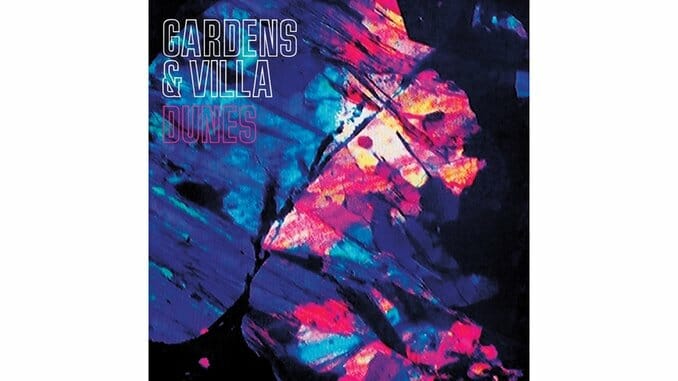Gardens & Villa: Dunes

You’re driving along the treacherous winding streets of a California cliffside. You’re in the company of friends and the night is swelling with the expectant noise that vibrates between people who have long ago given up the desire to give a damn. The car and the outfits are modern, but the eroding rocks and pavement are archaic. You’re looking out on the unending sheets of crashing waves that make up the vast Pacific vista, and the wind is beating on the car with a consistent rhythm. This is Dunes.
Gardens & Villa’s sophomore album, Dunes, is an enticing amalgamation of contemporary dance music sensibilities laid over familiar, primal roots. The pointed, salient synths of Adam Rasmussen mesh fluidly with the soft melodies of lead singer Chris Lynch’s bansuri flutes and falsetto cries. Innumerable intricacies layered into the background make for an encompassing wall of notes that pulls you into a unusual dance.
Gardens & Villa’s debut album was an assortment of songs that reminded one of leaving the house of a lover in the middle of the night or reminiscing over the long-gone nights you spent staying up too late with a previous lover. Dunes has those same elemental emotions, but it encapsulates more of a feeling of independence and confidence than the former. It is an intoxicated scream into the crowd that you’re young and you’re going to do as you see fit. The solemn upbringing is still there, but it is from the perspective of someone who has moved past their previous reservations.
Catchy songs like “Avalanche” are loud confessions that show little remorse, while the song that follows, “Minnesota,” is a sorrowful, nostalgic howl. The latter makes you want to scream into a pillow and down half a bottle of whiskey before you can feel anything ever again. At the same time, it provides an insightful break from the modern, beat-driven songs on much of the rest of the album.
I just took a break from writing this review and ended up dancing to Dunes in my living room for a moment, and then also felt a moment of introspection. I suppose that sums up the album for you. I spoke with the band via computers and the following is what they said.
What brought about the new sound?
Chris Lynch: I guess some of it came from before we left for Michigan [to record with producer/DFA co-founder Tim Goldsworthy]. Dustin ran a local radio show for a while and had access to a vast library of vinyl records. He started spinning lots of quality tracks—Lady Peachena, Shirley Lites, David Joseph. And then we all got really into Ryuichi Sakamoto. His album, Left Handed Dream, blew us away. Goldsworthy had quite a bit of influential stuff to share, too. Other than that, lots of late-night spacey jam sessions in our warehouse spot. Loads of movies—we actually recorded quite a bit “chop” and “punch” sounds from ‘70s and ‘80s VHS Kung fu movies—put ‘em into the record. But if you listen to the demos we made before Michigan, the songs really changed/evolved in the studio. When there is a dude talking to you about music in a heavy British accent, you play better, I think.
-

-

-

-

-

-

-

-

-

-

-

-

-

-

-

-

-

-

-

-

-

-

-

-

-

-

-

-

-

-

-

-

-

-

-

-

-

-

-

-








































